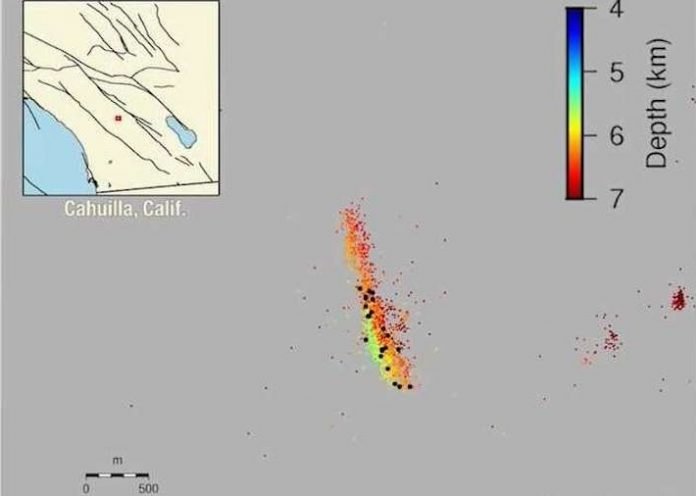
In a new study, researchers have discovered almost 2,000,000 previously hidden earthquakes between 2008 and 2017.
They used 10 years’ earthquake catalog for Southern California and expanded the number of recorded earthquakes from about 180,000 to more than 1.81 million.
This means there are about 500 earthquakes every day across Southern California.
The research was conducted by Caltech seismologists and collaborators.
In the study, the newly discovered hidden earthquakes are small ones between negative magnitude 2.0 (-2.0) and 1.7.
The researchers suggest that these quakes are so small that they can be covered by the background noise, such as shaking from automobile traffic or building construction.
To overcome the low signal-to-noise ratio, they use a technique known as “template matching”.
In the method, slightly larger and more easily detectable earthquakes are used as templates to show what an earthquake’s signal at a given location should look like.
When a likely earthquake candidate with the matching waveform was found, the team then scanned records from nearby seismometers to see whether the earthquake’s signal had been recorded elsewhere and could be independently verified.
Previous research has shown that this method works best in regions with closely spaced seismometers and because it is computationally intensive, it has been limited to much smaller data sets.
In the current study, the team used an array of 200 powerful graphics processing units (GPUs) that worked for weeks to scan the catalog, detect new earthquakes, and verify their findings.
The new data show that earthquakes in Southern California occur at an average of roughly three minutes apart.
This is much more frequent than what previous earthquake cataloging had suggested. The past results showed that approximately 30 minutes would elapse between seismic events.
The team believes that the richer data set will allow scientists to gain a better view of how seismic events affect and move through the region.
The finding also suggests that the labor-intensive identification technique could be used to detect earthquakes in a larger area.
The lead author of the study is Zachary Ross, who will join the Caltech faculty in June as an assistant professor of geophysics.
The study is published in the journal Science.
Copyright © 2019 Knowridge Science Report. All rights reserved.



